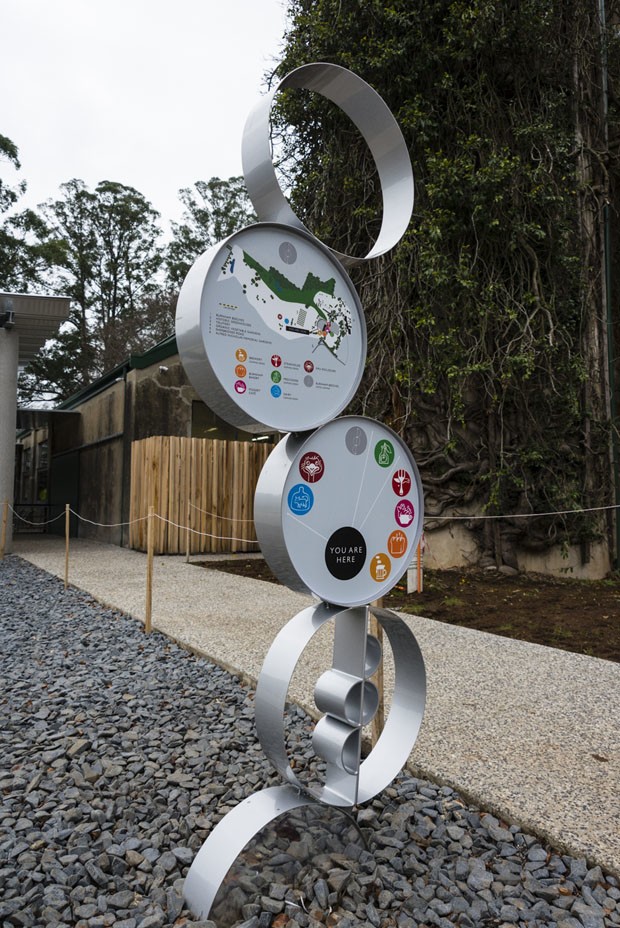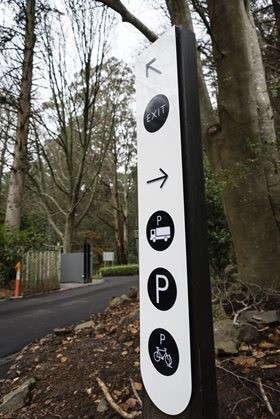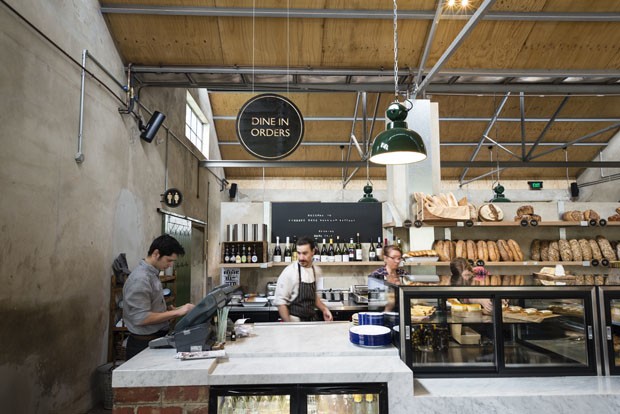Last year at Best Group, we introduced a concept called “Smarter Outcomes” to maximise return on design objectives.
As a result of this new concept and through analysing what value we had collaboratively added to projects over the previous year; it became evident that smart signage is integral to clever design.
The benefit of clever signage to your overall design strategy is two-fold:
-
Seamless integration with the architecture of the site, the landscape or the natural environment; and
-
To ensure the navigation and human-use of the site and built elements is as fluid and functional as possible.
An excellent example of where signage has been essential to successful design is the soon to be completed Burnham Beeches project in Sherbrooke, Victoria. A design collaboration between chef, Shannon Bennett and property investor, Adam Garrison, this 23-odd hectare property in the Dandenong Ranges will be home to what I would call the food-lifestyle version of the Museum of Old and New Art (MONA) in Hobart, Tasmania.


The project incorporates a bakery, café, micro-brewery, market garden, steakhouse, trufferie, emu farm, artist-in-residence, private villas and the restoration of the original homestead to a modern, boutique art hotel. With architecture by global studio Woods Bagot, Best Group was engaged by the visionaries of the project to collaborate on managing the design and construction of signage.
From a high-level perspective, the integration of a signage consultant demonstrates passion and commitment to inter-disciplinary design management while ensuring smarter outcomes. For Burnham Beeches, each discipline of design had its own scope. The cleverness, however, is in the execution – collaborating at certain intervals of the design process to ensure the original vision of the creators would be realised in built form, and the customer experience would be on brief.


Best Group developed a creative suite of signage elements for Burnham Beeches, reflective of sculptural artworks, which are empathetic to the original and new architecture of the site, the landscape and the beautiful environment. The design integrates and elevates the branded elements of Burnham Beeches to ensure the navigation and human-use of the site is as the creators intended.
From a micro-level perspective, a signage consultant provides niche, expertise in core areas to manage what can be a very nuanced and challenging task at times. Beyond inter-disciplinary design collaborations ensuring smarter outcomes, it is the commercial management capabilities of a signage consultant that can make or break the success of clever design.


Signage construction project managers must ensure balance is maintained during the design process from concept to actualisation – skilfully building and implementing the design on time and on budget without compromising the design intent or functional objectives. Many elements must be considered to ensure this balance – material substitutes, rationalising or reducing scope, managing quality control, multiple contractors and suppliers… the list is endless.
When all elements hum in unison, the result is inspiring. If done correctly, the integration of a professional signage consultant (design to construct) can have a significant impact on the look and functionality of a built environment. This is the new version of clever design.

